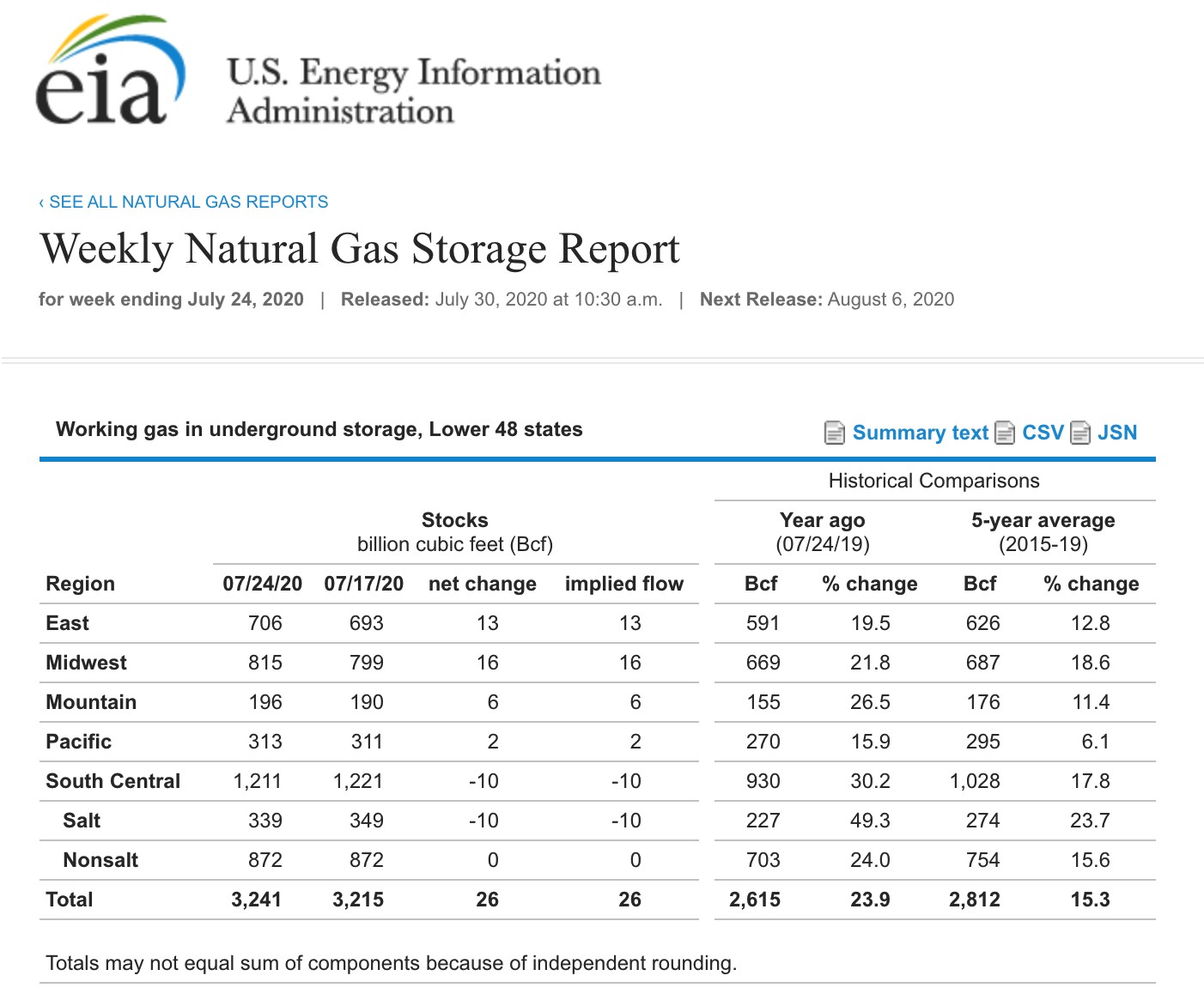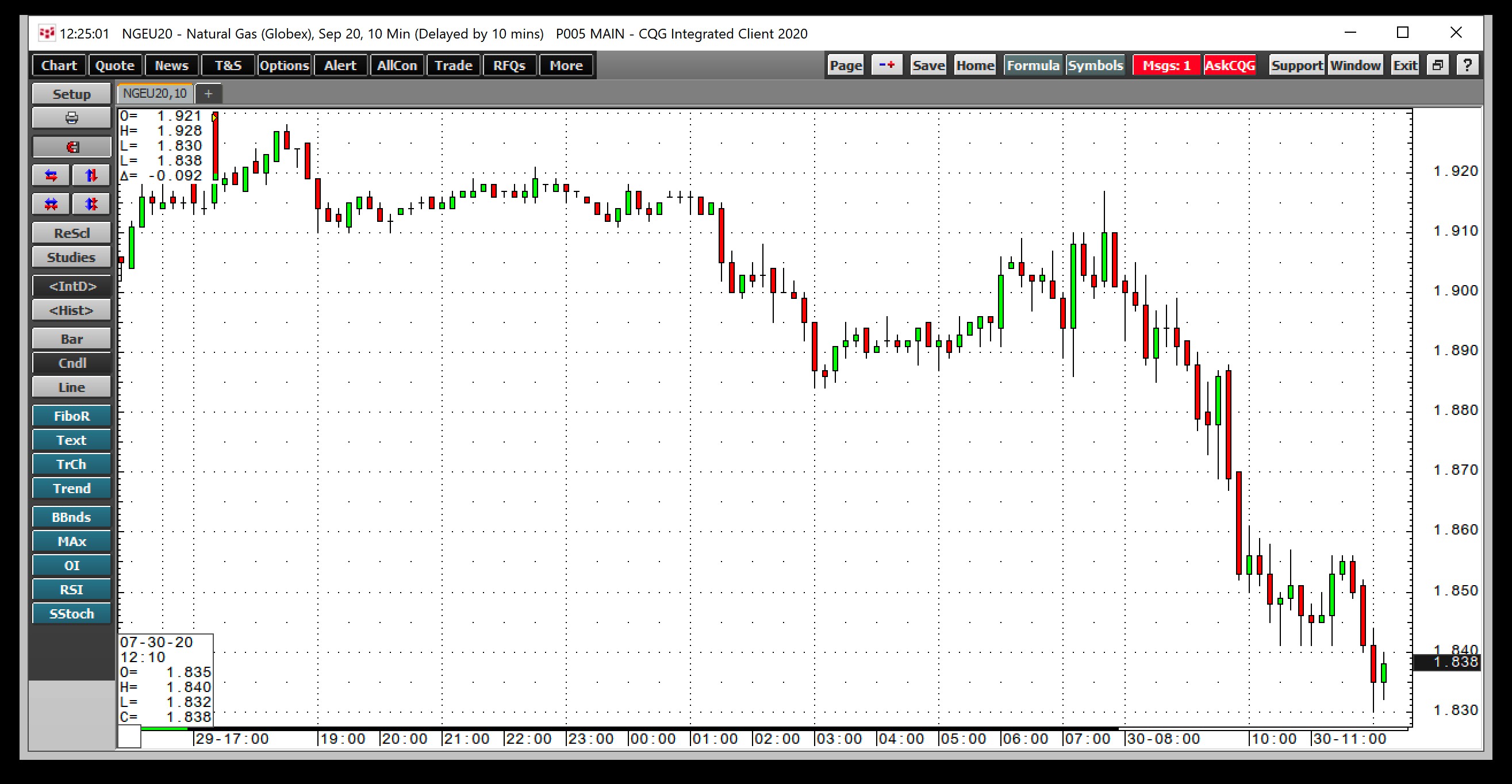Since late June, the natural gas futures market is attempting to establish a pattern of higher lows and higher highs. The energy commodity received a vote of confidence from none other than Warren Buffet when he recently purchased the natural gas assets of Dominion.
The weather in the United States has been warm this summer, boosting the demand for air conditioning. Over the past years, natural gas replaced coal as the primary input in power generation. However, with business activity still progressing at a slow pace, overall requirements have not been the same as in past years.
On Thursday, July 30, the Energy Information reported the latest inventory injection. Natural gas flowing into storage has been declining over the past weeks, which is a function of lower production and the decline in the rig count.
The United States Natural Gas Fund (NYSE:UNG) tracks the price action in the NYMEX natural gas futures market.
Market Expected 32 bcf Build
According to Estimize, a crowdsourcing website, the market consensus was for a 32-billion-cubic-feet increase in natural gas in storage across the United States for the week ending on July 24.

Source: EIA
As the chart highlights, the injection came in below estimates at 26 bcf. Stockpiles are at 3.241 trillion cubic feet, 23.9% above last year’s level, and 15.3% over the five-year average for late July. It was the 18th consecutive week where the percentage over last year’s level declined. Stocks are still high for this time of the year. With the withdrawal season beginning in November, the potential for a peak in stocks at or above the four trillion cubic feet level remains high. However, according to Baker Hughes, only 68 natural gas rigs were extracting the energy commodity from the earth’s crust as of July 24, 101 lower than last year. Natural gas production continues to decline as the nearby futures price is below the $2 per MMBtu, and demand has suffered because of the coronavirus.
Natural Gas Has Been Trying To Recover
August futures rolled to September in the natural gas market as the energy commodity is now looking past the summer season.

Source: CQG
The chart illustrates that the medium-term trend remains lower, but since late June, the futures have attempted to make higher lows. On June 26, the September futures contract fell to a low of $1.583 per MMBtu. A recovery took the price to a high of $1.989 on July 7. After a correction to a higher low at $$1.646 per MMBtu on July 20, the price reached $1.937 on July 29. The recovery took price momentum and relative strength indicators above neutral readings. Daily historical volatility has moved higher since finding a bottom below 39% on July 22 and was at over the 52% level on July 30 as daily trading ranges have been expanding.
Even though the latest injection into stockpiles was below the market’s expectations, the price of the energy commodity fell on Thursday.

Source: CQG
The 10-minute chart shows that after a knee-jerk move to a high of $1.917, the price of natural gas fell back to the low $1.80s later in the day.
$2 Target (NYSE:TGT), But Bears Will Return With A Vengeance
Trading from the short side in the natural gas futures market has been the optimal approach to the energy commodity since late 2018 when the price traded to a high of $4.929 per MMBtu. I continue to believe that the odds favor a move to over $2, and a test of the early May peak at $2.162 is likely. However, the overall bearish sentiment, the high level of stocks going into the winter of 2020/2021, and the technical trading pattern could unleash a tidal wave of selling at over $2. I will not forget to take profits on long positions at above $2 per MMBtu.
From a longer-term perspective, falling production is fundamentally bullish for the price of natural gas, but there should be plenty of opportunities to buy at low levels in 2021.
